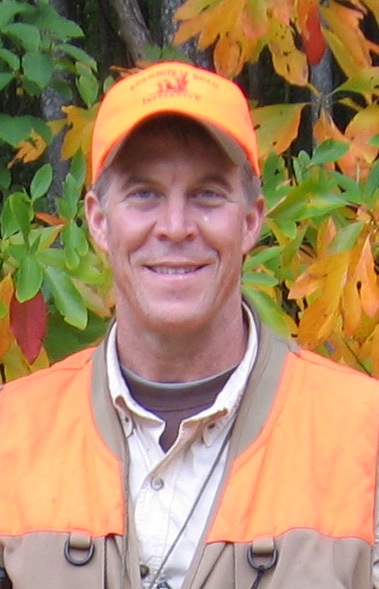Nature abhors a vacuum.
–Ancient proverb, variously attributed to Aristotle, Rabelais, Descartes or Spinoza
I frequently assert the need for greater leadership in the NBCI’s quest to restore bobwhites. But leadership is much easier to invoke than to exercise. Why do we need leadership for quail? And what does it really mean? Why we need leadership is easy: (1) to make things happen, such as by prioritizing and allocating resources, and (2) to prevent vacuums that can have unpredictable consequences.
Quail Leadership is Complex
What quail leadership means is more complex. I envision it arising from all levels and myriad sources, the more the better. But with the legal and political realities of quail conservation in the U.S., some sources of leadership are more crucial than others. In the end, bobwhites are the legal authority and stewardship responsibility of the states. Thus, state leadership—or lack of it—trumps all other sources, in my view.
Texas quail populations are in a dramatic slump, which has hit the state’s hunters and landowners hard. Most of the rest of the bobwhite states are in the same boat, but their slide was gradual, hardly noticeable; Texas’ populations went bust quickly, painfully. Most biologists generally expect Texas’ bobwhites to rebound with a couple consecutive wetter years, at least in areas of extensive good habitat. Nonetheless, the drastic bust created an unfamiliar sense of urgency among diverse Texas quail enthusiasts, many of whom began energetically seeking causes, remedies and immediate actions.
The resulting scramble has complicated the Texas quail conservation scene over the last couple years. But there is a notable bright side: numerous Texas quailophiles have become energized and active, maybe more than ever. The demonstration of energy and passion by professionals and citizen conservationists is inspiring. It would be difficult for any other quail state to muster the people, institutions, and organizations that are working right now to help Texas quail.
TPWD Stands Up
But the most crucial element of the state’s quail leadership was caught off guard, both by the problem and the uprising. The resulting vacuum temporarily enabled a disorganized crisis atmosphere. New high-profile research institutes arose seemingly overnight, pursuing various purposeful and cultural quail management solutions. Others invested heavily in basic research on hypotheses for observed phenomena that don’t seem to fit traditional paradigms. Outdoor writers and hunters called loudly for the Texas Parks and Wildlife Department (TPWD) to shorten or even close hunting seasons, and cut bag limits – to do something, anything, whether it would help or not. Across the board, these quail enthusiasts sought unifying leadership.
At the height of the cacophony—arguably because of it—TPWD stood up, to begin exerting the needed and desired authoritative leadership. This ongoing process and its outcomes could prove to be illuminating.
Science Meeting & Summit
The Department convened a quail science meeting in March, inviting a handful of prominent quail research authorities, including NBCI Science Coordinator, Tom Dailey. The aim was to help TPWD evaluate the state of its quail data, determine if conservative regulations could help populations, and make recommendations on best next steps for TPWD. The science advisors concluded (1) conservative regulations would make no significant difference in quail populations at large scales, and (2) aggressively implementing quail habitat focus areas in collaboration with joint venture partnerships, to meet NBCI population objectives, would be the soundest immediate course of action.
Following the science review, TPWD leadership immediately convened in early June the first joint meeting of its two key stakeholder groups – the Upland Game Bird Advisory  Committee and the Quail Roundtable. This meeting brought together representatives of all the quail horsepower statewide, including nearly two dozen separate organizations and agencies. The day-long summit was moderated by TPWD Executive Director Carter Smith, with his commission, deputy, wildlife chief, statewide quail coordinator and numerous other TPWD biologists engaged. The purpose was to present the results of the science team’s review, lay out TPWD’s preferred course of action (keep regulations the same, but aggressively implement quail focus areas with monitoring), and give everyone a chance to have their say.
Committee and the Quail Roundtable. This meeting brought together representatives of all the quail horsepower statewide, including nearly two dozen separate organizations and agencies. The day-long summit was moderated by TPWD Executive Director Carter Smith, with his commission, deputy, wildlife chief, statewide quail coordinator and numerous other TPWD biologists engaged. The purpose was to present the results of the science team’s review, lay out TPWD’s preferred course of action (keep regulations the same, but aggressively implement quail focus areas with monitoring), and give everyone a chance to have their say.
My presentation at the summit included this text slide, with a theme of the need for sustained assertive leadership at all levels—national, state and local— with constructive collaboration up and down among all levels. But for quail, the authoritative leadership must be centered with the state agency—with TPWD for Texas quail. Without the states in the lead, I am convinced no amount of local or national activity has much chance to solve a statewide quail problem.
I left Texas gratified to have witnessed and participated in an influential demonstration of much-needed state leadership for quail. Follow-through is the next key, of course, but the commitment I detected from TPWD leaders gives me hope the state has climbed in the saddle to stay for a while. Just as important, I perceived the state’s vital partners standing ready to pitch in to help the collective cause in their various own ways. That resulting collaborative spirit gives me renewed hope for Texas, and could offer a useful model for others.


